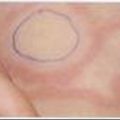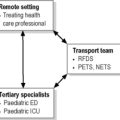14.5 Foreign bodies and caustic ingestion
Nasal foreign bodies
Treatment
Except for button batteries (see also Chapter 7.6), removal of the foreign body is not urgent. Most foreign bodies can be successfully removed in the ED with adequate preparation and planning. Prior to the attempted removal, use of a topical anaesthetic nasal spray, such as lidocaine + phenylephrine, is recommended. Sedation and/or appropriate restraint of the child may be required. A good light source and an assistant to hold the child’s head still are essential.
Aural foreign bodies
Treatment
Button batteries are again a risk (see also Chapter 7.7), causing necrosis of the ear canal or tympanic membrane and should be removed as soon as possible. A live insect should be killed or immobilised with microscopic immersion oil, mineral oil or local anaesthetic solutions (2% lidocaine). It can then be removed using irrigation or forceps. Putty is often very difficult to remove and may require otomicroscopic removal. Sharp objects also usually require ENT removal.
Caustic ingestion
History
In children, in contrast to adults, ingestion is largely accidental and, as a result, significant injury far less common. Most cases occur in children less than 3 years of age and, like accidents in general, occur in boys more frequently than girls. Most ingestions occur at the home of the child. The most common alkali agent ingested is dishwasher detergent and commonest acidic agent is acetic acid. Button batteries have a significant corrosive and burn risk if lodged or impacted in the oesophagus (see Chapter 7.6).
Anderson K.D., Rouse T.M., Randolph J.G. A controlled trial of corticosteroids in children with corrosive injury of the esophagus. N Engl J Med. 1990;323(10):637-640. [comment]
Ansley J.F., Cunningham M.J. Treatment of aural foreign bodies in children. Pediatrics. 1998;101(4):638-641.
Christesen H.B. Epidemiology and prevention of caustic ingestion in children. Acta Paediatr. 1994;83(2):212-215.
Cox R.J. Foreign bodies, nose. 2001. eMedicine
de Jong A.L., MacDonald R., Ein S., et al. Corrosive esophagitis in children: A 30-year review. Int J Pediatr Otorhinolaryngol. 2001;57(3):203-211.
Karnak I., Tanyei F.C., Buyukpamukou N., et al. Pulmonary effects of household bleach ingestion in children. Clin Pediatr. 1996;35(9):471-472.
Kiristioglu I., Gurpinar A., Kilic N., et al. Is it necessary to perform an endoscopy after the ingestion of liquid household bleach in children? Acta Paediatr. 1999;88(2):233-234.
Lamireau T., Rebouissoux L., Denis D., et al. Accidental caustic ingestion in children: Is endoscopy always mandatory? J Pediatr Gastroenterol Nutr. 2001;33(1):81-84.
Lovejoy F.H.Jr, Woolf A.D. Corrosive ingestions. Pediatr Rev. 1995;16(12):473-474.
Mantooth R. Foreign bodies, ear. 2001. eMedicine
Nuutinen M., Uhari M., Karvali T., Kouvalainen K. Consequences of caustic ingestions in children. Acta Paediatr. 2001;83(11):1200-1205.
Samad L., Ali M., Ramzi H. Button battery ingestion: Hazards of esophageal impaction. J Pediatr Surg. 1999;34(10):1527-1531.
Tong M.C., Ying S.Y., van Hasselt C.A. Nasal foreign bodies in children. Int J Pediatr Otorhinolaryngol. 1996;35(3):207-211.
Ziegler D.S., Bent G.P. Upper airway obstruction induced by a caustic substance found responsive to nebulised adrenaline. J Paediatr Child Health. 2001;37(5):524-525.




